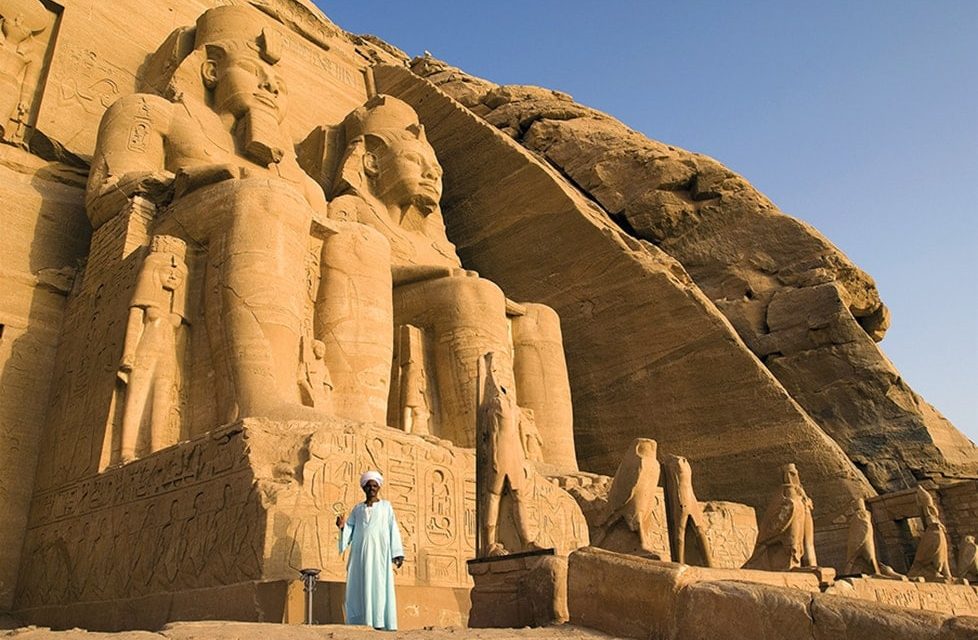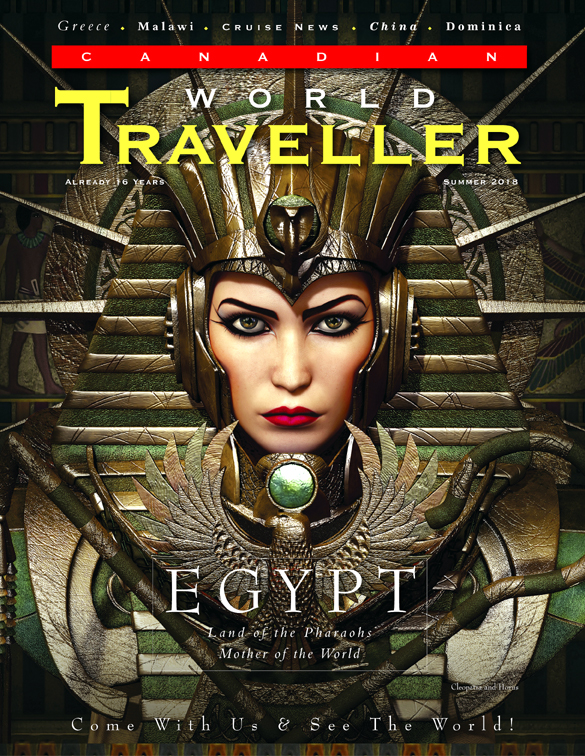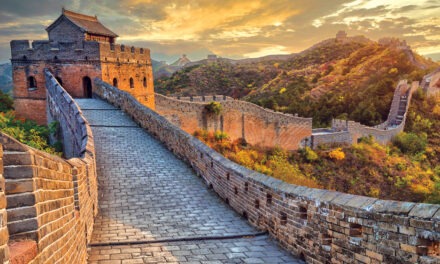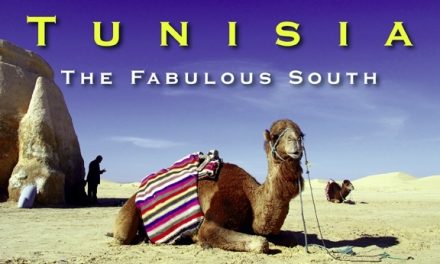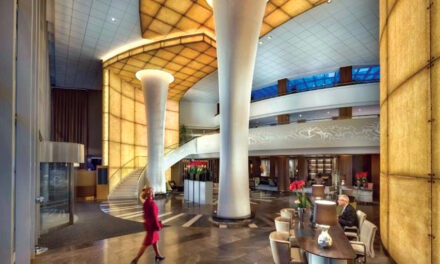Egypt
At the Crossroads of History, Culture & Civilizations
by Dwain Richardson

Egypt has been steeped into history for the longest time. Because there has been a lot of interest in Egypt’s history, historians coined the term “Egyptology,” which is the study of pharaonic Egypt. Egyptology spanned the period between c. 4500 BCE and CE 641. How did Egyptology begin? Scholars going with Napoleon Bonaparte’s invasion of Egypt published the Description de l’Égypte (1809–1828); this publication made huge quantities of source materials about ancient Egypt available for Europeans.
Did you know that written Egyptian documents dated to c. 3150 BCE? This was the first time that pharaohs developed the hieroglyphic script in Upper Egypt. These scripts provided the source material for Egyptological study.
Following the Arab conquest, only the Copts kept the ancient language alive (written in Greek characters). Coptic texts taken Egypt during the Renaissance awakened interest in the Egyptian language. German Jesuit Athanasius Kircher published a Coptic grammar in 1643; European travellers returned to Egypt with antiquities and stories of wondrous ruins. What’s more, Egyptology became an academic discipline in France, England, and Germany.
American museums opened Egyptian collections in the late nineteenth and early twentieth centuries. The University of Pennsylvania, the Metropolitan Museum of Art, and the Brooklyn Museum are some of music collections that have done a lot of work in Egypt.
On the geographical front, Egypt has two coastlines on the Mediterranean and Red Sea. It borders Libya to the west, the Gaza Strip and Israel to the east, and Sudan to the south.
Egypt has an area of 1,001,449 square kilometres. The longest straight-line distance from north to south is 1,024 kilometres, and the straight-line distance from east to west is 1,240 kilometres long. The country’s maritime boundaries measure more than 2,900 kilometres of coastline along the Mediterranean Sea, the Gulf of Suez, the Gulf of Aqaba, and the Red Sea.
Most of the country is made of desert. Thirty-five thousand square kilometres (3.5%) of the total land area is cultivated and permanently settled. Most of Egypt is located within the desert zone that runs east from Africa’s Atlantic Coast and connects with southwestern Asia.
Four leading geological regions are present in Egypt: Nile Valley and Nile Delta, Western Desert (also known as Libyan Desert), Eastern Desert (an extension from the Nile Valley until the Red Sea Coast), and Sinai Peninsula. Of the geological regions, the Nile Valley and Nile Delta are the most significant areas, though they cover only 5.5% of the country’s total area.
Cairo
While you’re in the country’s capital, be sure to visit the following attractions:
Great Pyramid of Giza
This is the oldest and largest of three pyramids in the Giza complex. It borders El Giza. The Great Pyramid is one of the Seven Wonders of the Ancient World, and is the only structure that has remained intact over the years. The Great Pyramid has three chambers. The lowest chamber was cut into the bedrock, which served as the chamber’s foundation and was left unfinished. The Queen’s and King’s Chamber are the second layer of this structure. Lastly, the upper layer is made of buildings that used to include two mortuary temples to honour Khufu, Egypt’s second pharaoh of the fourth dynasty, three smaller pyramids for Khufu’s wives, a “satellite” pyramid, a raised causeway to join the two temples, and small mastaba tombs. (Mastaba means “house for eternity” or “eternal house.”)
Great Sphinx of Giza
This is a national symbol for ancient and modern Egypt. The sphinx is carved from the Giza plateau’s bedrock. If you look at it carefully, you’ll see that it looks like a lion’s body. The head looks like that of a king or god. The sphinx symbolizes wisdom and strength. Visitors would be pleased to note that the sphinx has been recently restored. You can find the Great Sphinx at the Nile River’s west tip, located near Cairo. While visiting, let yourself be amazed by the many temples that surround the sphinx. Some of these temples contain multiple sphinxes.
Egyptian Museum of Antiquities
This is Egypt’s largest museum. It opened in 1902. Visitors will be greeted with 107 halls, huge statues (on the ground floor level), small statues, jewels, Tutankhamon treasures, and mummies (all on the upper level). Interested in photos? The Egyptian Museum of Antiquities has dedicated a section to photography. And if you like books, periodicals, and other written material, you’ll be able to visit the library. Lastly, the museum dedicates seven sections to treasures and monuments in chronological order. See Tutankhamon’s treasures in the first section. All pre-dynasty and Old Kingdom monuments are found in the second section. The third section presents the first intermediate period and Middle Kingdom monuments. In the fourth, check out the Modern Kingdom monuments. In the fifth section, find all the late period monuments (including those of the Greek and Roman periods). Find coins and papyrus in the sixth section, and sarcophagi and scrabs in the last section.
Mosque of Muhammad Ali
You can see this Ottoman mosque from a mile away. It was built in the nineteenth century and in honour of Tusun Pasha, Muhammad Ali’s oldest son, who passed away in 1816. Architect Yusuf Bushnak completed the structure in 1848. The mosque and citadel are some of many attractions and landmarks in Cairo. Step inside the mosque and you’ll see that its architecture is typical of Turkish style. The mosque has a main dome surrounded by four small and semicircular domes. The minarets are cylindrical and have two balconies and conical caps (you’ll see these on the mosque’s western side). The mosque is made primarily of limestone. The lower storey and forecourt, however, are made of alabaster. The mosque’s western entrance leads to the open courtyard. The courtyard is surrounded by rounded arcades with small domes. You will notice a marbled fountain in the middle of the courtyard, built by Ismail Pasha in 1828. One last detail about the courtyard: Note an iron clock on the western wall, presented to Muhammad Ali by King Louis Philippe (France).
The Hanging Church
(St. Virgin Mary’s Coptic Orthodox Church)
This is one of Egypt’s oldest churches. The history of this particular church dates back to the third century A.D. Why is this attraction known as the Hanging Church? It is situated above a Babylon Fortress gatehouse, and its nave is suspended over a passage. Unlike most churches that may have as many as ten steps, the Hanging Church has twenty-nine. Be prepared for a long hike up! Once you enter the church, be prepared to see 110 icons. Of these icons, the oldest dates back to the eighth century. The others, however, hail from the eighteenth century. The iconostases within the church are made of ebony and ivory, just like the main altar. The icons depict a number of religious personalities, including the Virgin Mary, the Twelve Apostles, and St. John the Baptist.
Khan el-Khalili
Care to do some shopping during your stay in Cairo? You’d want to stop by Khan el-Khalili. This bazaar district is the city’s main attraction for residents and tourists alike. The bazaar, which was first a mausoleum, used to be the heart of Cairo’s economic activity; sultans would build businesses nearby. Today, most Egyptians run businesses here. Take advantage of buying local products (souvenirs, antiques, jewellery). But there’s more: take a sip of coffee or shisha at one of the many coffeehouses along the strip. If you’re feeling hunger pangs, many restaurants are at your fingertips. If you prefer to buy foods, you’ll come across many food vendors throughout the market.
Sinai Peninsula
Ras Muhammed National Park
This is the most famous park in the country known for scuba diving. As you dive below the crystal waters of the Red Sea, you’ll see many coral reefs and various species. The sea walls are breathtaking, too. Ras Muhammed National Park became a protected area in 1983. Divers, please note: You cannot dive anywhere you please. You need to dive in selected areas only. Another important tip: Visitors must vacate the premises by sunset. The best places for scuba diving? Shark and Yolanda Reefs. Both reefs are mountain-like peaks rising from a sandy sea bed spread out below the surface. You can also scuba dive at Satellite Reef if the sea current isn’t too strong.
St. Catherine’s Monastery
Its official name is Sacred Monastery of the God-Trodden Mount Sinai, and is located at the foot of Mount Sinai. It is part of the Church of Sinai, which is a member of the wider Eastern Orthodox Church. Like other churches in the country, St. Catherine’s Monastery teems with iconic art, particularly mosaics. Most of the art is in the form of hot wax painting. In addition to mosaics, visitors will find several liturgical objects, chalices and reliquaries, and church buildings. A few other points of note: The monastery has the oldest operating library. St. Catherine City, located around the monastery, is a small town with hotels and swimming pools. The monastery is a UNESCO World Heritage Site.
Sharm-el-Sheikh
This is a city located on Sinai Peninsula’s southern tip and along the Red Sea coastal strip. This is the economic hub for the country’s southern governorate, and includes cities such as Dahab and Nuweiba. You’ll find St. Catherine’s Monastery and Mount Sinai nearby. Most importantly, Sharm-el-Sheikh is a holiday resort for tourists. Watersport and scientific tourism enthusiasts will appreciate this southern city a great deal: it is possible to do snorkelling and scuba diving, and those interested in species will be happy to note that there are 250 various coral reefs and one thousand types of fish. And let’s not forget the resorts: Aqua Blu Sharm Resort is one of many resorts tourists can choose from for accommodation and meals. For the curious, Aqua Blu is a four-star hotel resort.
Nile River
Many boating companies offer cruises along the Nile River. Some companies of note are Avalon Waterways, Emerald Waterways, and Memphis Tours. Visit the company websites for information on fares and booking.
Luxor
Located in Upper Egypt and often characterized as “the world’s greatest open-air museum” (characterized as such because the temple complex ruins in Luxor and Karnak are in the modern city). Temples and museums grace Luxor’s east bank. Temples also make up the many attractions in the west bank. In addition, you’ll find two valleys of note—Valley of the Kings and Queens—Tombs of the Nobles, Deir el-Medina (workers’ village), and Malkata (palace for Amenophis III, ninth pharaoh of the eighteenth dynasty).
Valley of the Kings
This is the place where people constructed tombs for pharaohs and powerful nobles for five hundred years (sixteenth to eleventh century B.C.). Visitors can find this valley on the Nile’s west bank. The valley is divided in two: East Valley and West Valley (most tombs are in the eastern zone). Unfortunately, most tombs are not open to the public, and the tombs that are open may sometimes close whenever restoration work must be done. Only one tomb is accessible to the public in the West Valley. Visitors must have a ticket in hand to see the site. Guides will show you around the tomb, but they cannot talk while visiting inside. Sorry, camera lovers: photography is no longer permitted inside the tomb’s walls.
Karnak Temple Complex
Come see a mix of temples, chapels, pylons, and other buildings at this complex. Construction began during the Middle Kingdom period and continued into the Ptolemaic period. Did you know that Karnak is a common name in popular culture? It’s been the feature location for a number of movie scenes in Transformers: Revenge of the Fallen and The Mummy Returns. Agatha Christie’s Death on the Nile takes place aboard the S.S. Karnak steamship. And a number of music groups, including the British symphonic metal band Bal-Sagoth, make mention of Karnak in songs like “Unfettering the Hoary Sentinels of Karnak.” This is a UNESCO World Heritage Site.
Aswan
This is another southern city in Egypt. What makes Aswan special? It teems with tourists year-round. In fact, Aswan is an ideal winter destination for many, since the Nile River offers breathtaking views. The river flows through granite rocks, round emerald islands covered in palm groves, and tropical plants. And like most Egyptian destinations, Aswan does not fall short of sites or monuments. Interested in visiting the Agha Khan Monastery? Sail across to the Philae Temple. If you want to see more attractions, why not take a trip to St. Simeon’s Monastery? Another feature of this city is culture. Take a bite into local fish produce at a restaurant while listening to Nubian music. Want to spice up your food? Stop by at a local market and purchase local spices. Up for a tattoo? You can get a henna (flowering plant) tattoo while you’re here. If you want to take a bit of Aswan with you as you return home, be sure to buy souvenirs and African handmade goods at the Aswan Bazaar. Finally, if you ever have arthritis or any type of pain during your stay, you can bury your body aches in the city’s sand. Aswan also has a number of sites for people to relax and rejuvenate.
Abu Simbel Temples
These are two massive rock temples located in Abu Simbel, a village in Nubia, near the Sudan border. You can find the temples on the western bank of Lake Nasser, 230 kilometres southwest of Aswan. To avoid being submerged by Lake Nasser, the temples were relocated in 1968. This is a UNESCO World Heritage Site; the complex is coined the “Nubian Mountains,” since they run from Abu Simbel to Philae, near Aswan. Two temples await visitors upon their arrival. The Great Temple is the largest. When you arrive at the entrance, you will see a bas-relief representing two images of the king worshipping Ra Harakhti, a falcon head. Step inside the temple and take a look at the layout. It is triangular in shape, as are most ancient temples in Egypt. The hypostyle hall is characterized by pillars representing Ramses linked to Osiris, the underworld god. This indicates the pharaoh’s everlasting nature. You’ll also see colossal statues; some of them bear a white crown of Upper Egypt, and others wear a double crown of Upper and Lower Egypt. A pillared hall follows the hypostyle hall. The pillared hall features various scenes of royalty and victories in past wars. The Small Temple is known for its statues of a king and his queen. Here’s one particularity with the Small Temple: scenes with the queen playing instruments adorn the walls. (The instrument in question is the sinistrum.) Pillars and bas-reliefs depict various scenes with pharaohs, queens, gods, and goddesses.
The Western Desert
Siwa Oasis
This is an Egyptian oasis sandwiched between the Qattara Depression and the Egyptian Land Sea in the Libyan Desert. It is one of the country’s most isolated settlements with a population of 23,000.
Agriculture is the main industry in the oasis, though tourism has become a runner-up in recent times.
With respect to culture, Berber inhabitants in the oasis were talented in creating basketry, pottery, silverwork, and embroidery crafts. Dress styles were also of major significance, especially bridal silver and silver ornaments/beads women wore at events. As roads and television services made headway in the Siwa Oasis, all silver ornaments were eventually replaced by gold ornaments.
Like most parts of Egypt, the Siwa Oasis has its share of festivals. The Sihaya Festival is by far the leading festival in the area. It honours Saint Sidi Sulayman, the town’s traditional patron. What happens during this festivity? The local men assemble on a mountain to eat, sing songs of thanks to God, and make peace with one another. The women remain in the village and celebrate by singing, dancing, and playing drums.
Here’s a brief list of sights you might want to check out as you visit the Siwa Oasis.
Mud-brick houses in Shali, an old town
Desert sand dunes south of Siwa
Siwa salt lake
Temple of the Oracle of the Amun
www.egypt.travel
Click on cover to view published article

